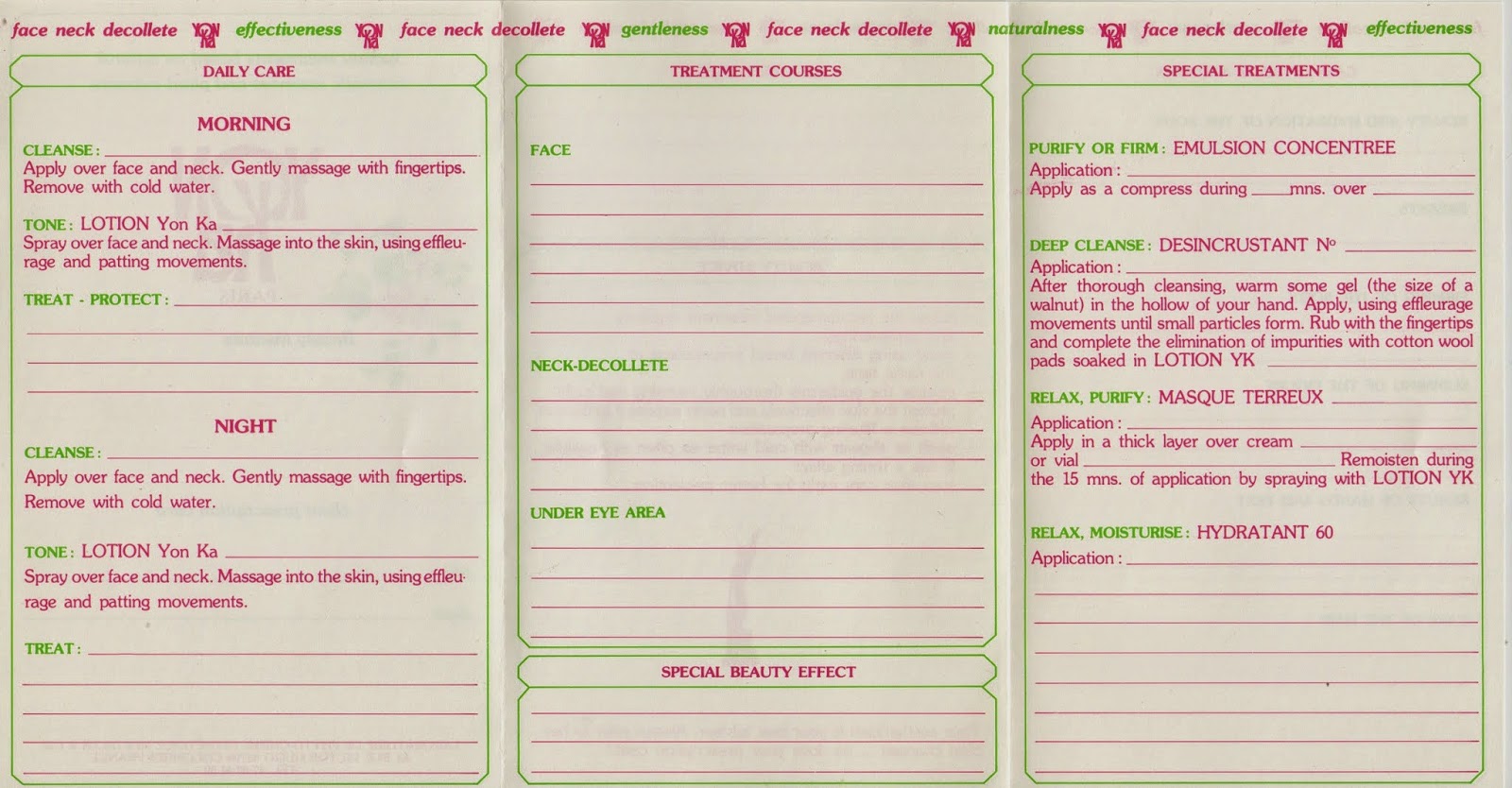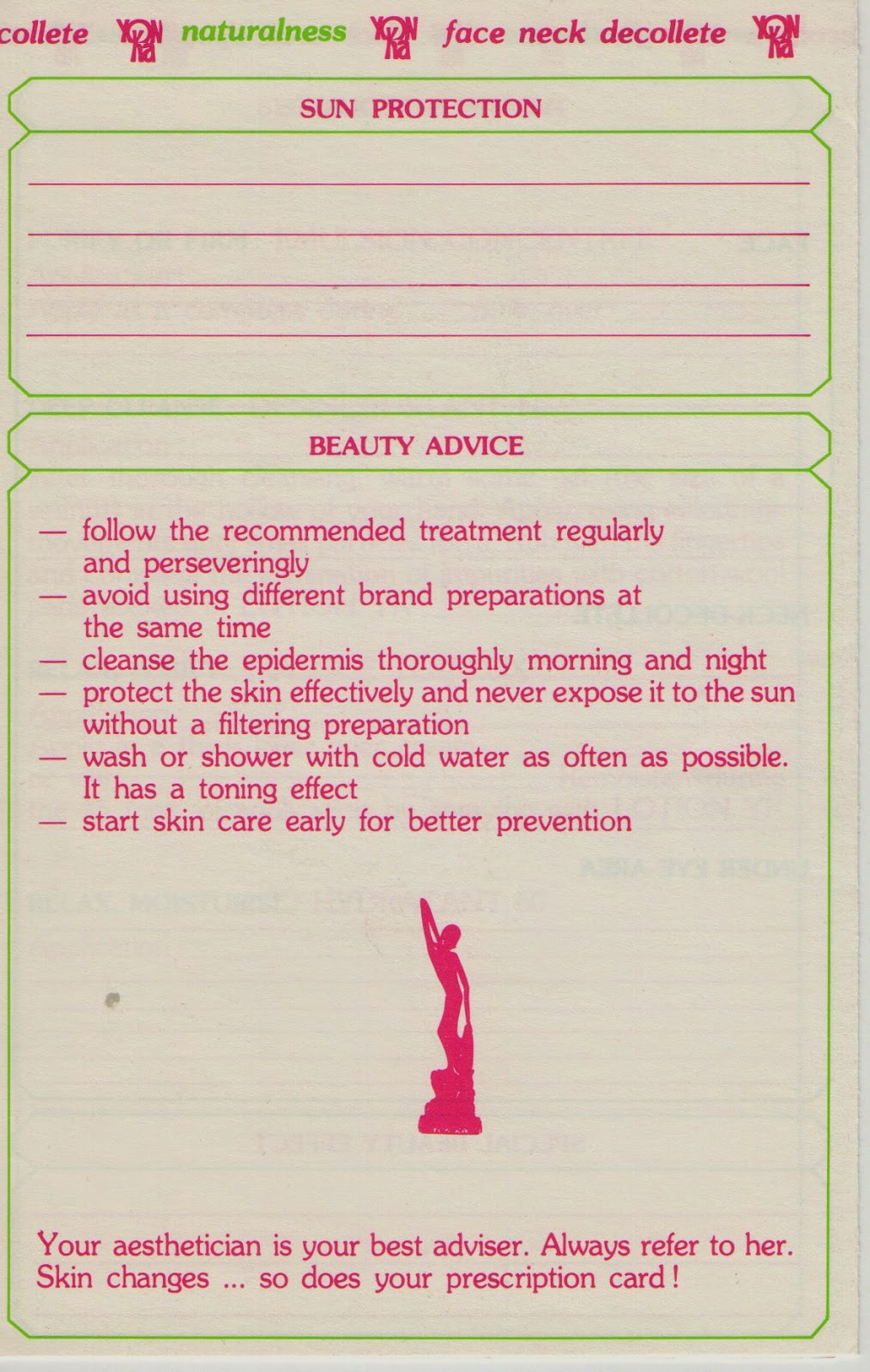Another reason I offer instructions for my clients is a matter of practicality. After the facial, before my client leaves, I go over verbally information about the samples and instructions on how to use them at home, the same information that is on the card. However many times right after a facial the client is in a sort of la-la land and not really able to retain this important information. By providing something written for them, you will avoid confusion for your clients and will probably sell more products because of that. Instruction cards or some facsimile are important for your client as well as for your business.
Below are many of the instruction cards I have used for the past 20 years in my practice. Starting with my first attempts, ending at the more professional-looking cards. They all contain basically the same information: the instructions on how to use the products I sell at my salon, the products (or samples) I have given this first-time client at the end of the facial. I want all my clients to have this information available to them at their home. These Instruction Cards are not just pieces of paper, but actual cards that will stand the test of time.
These were the cards I created when I first opened Carolyn Ash Skin Care in March of 1994. They were printed at Kinkos—before I had my logo designed—for very little money. I used white card stock, so these are stiff, unlike a mere piece of paper. Two cards equal a regular 8 1/2 x 11 sheet of paper or card stock. I printed out the 2 sides, front and back, on my computer and had Kinkos do the rest.
 |
| Instruction card—front |
 |
| Instruction card—inside |
 |
| Instruction card—back |
All these things I added I still, more than 20 years later, agree with:
- Nature is not a fashion.
- Your skin is alive and will respond according to the care you give it.
- Your skin is a mirror of your internal health. Take a look.
- The condition of your skin is #1 genetic and #2 a product of your lifestyle and habits.
- Sun is the Number 1 cause of premature aging.
- Don’t wear sunscreen with a false sense of security, but wear sunscreen.
- The only true sun block is indoors.
- Balance in all things is the key to longevity.
This was my second, revised, Instruction Card. I used the same process—hard card stock and printed at Kinkos—with improvements made in content along with little things for me, like providing check boxes to individualize easier for each client.
 |
| Instruction card—front/back |
 |
| Instruction card—inside |
Looking at these cards now, they are a bit crammed-full of information—my
heart was in the right place. Now I have my books and this blog to
dispense important tips and information, although these take-home cards
are still vitally important for your clients.
These were printed at the printer I used for my business cards, etc. You’ll notice I have my new logo design, which I kept for the rest of my career. Branding is important and I’m not a fan of changing the look of things, especially since I love this design. These are a trifold brochure-type, but I still used a card stock, a bit lighter weight than the ones above. Since these were printed with my other materials, I used my signature color (a particular, soothing green that doesn’t translate on the computer) that was already up on the press at my printer.
Here again, I’m using a standard 8 1/2 x 11 paper. You can have unusual-sized business cards or instruction cards, etc., but these will cost more money than standard sizes. Being a business owner, I always want to keep my costs down. I want my client to be impressed with me and my facial treatments, not necessarily with my printed materials. As you can see, I utilize my book covers on these instructions cards (as well as my business cards). It’s essentially free advertising.
 |
| Tri-fold Instruction card—front/back |
 |
| Tri-fold Instruction card—inside |
As some of you know, I have used Yonka products since 1985. For any of you who are ardent fans, you may be interested to see the following Yonka instruction card (although it was just paper, not hard card stock) from many years ago. Obviously I used this as a model for my first instruction card.
For more information, see:




